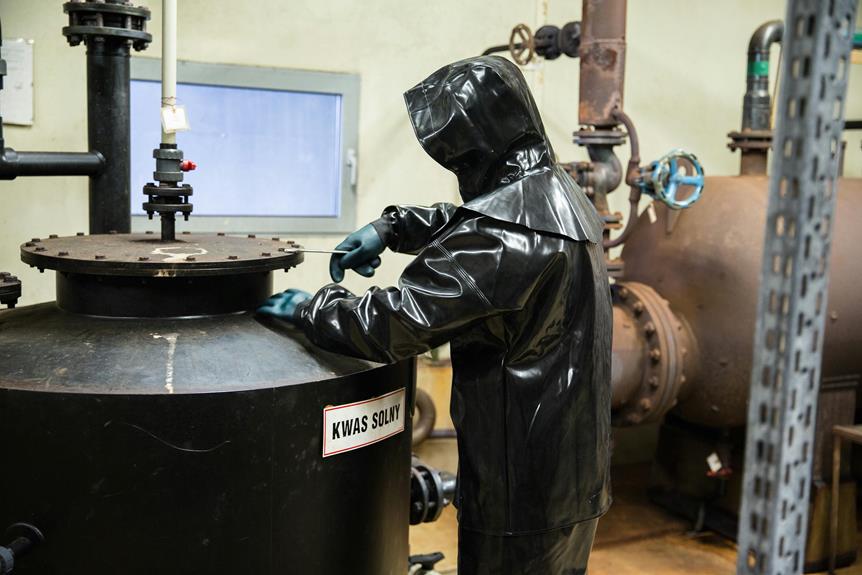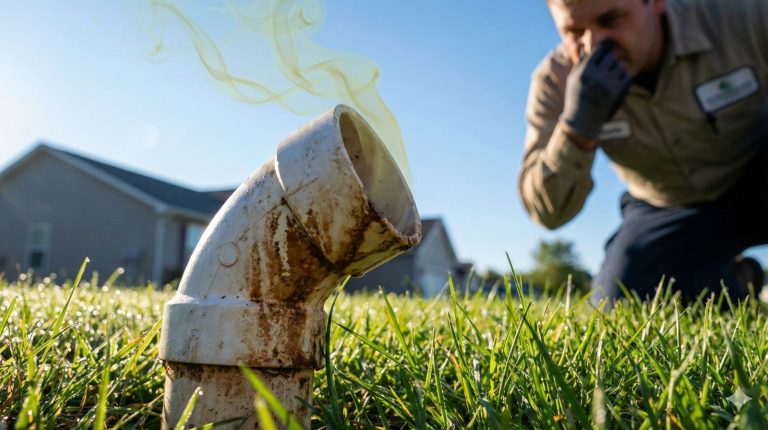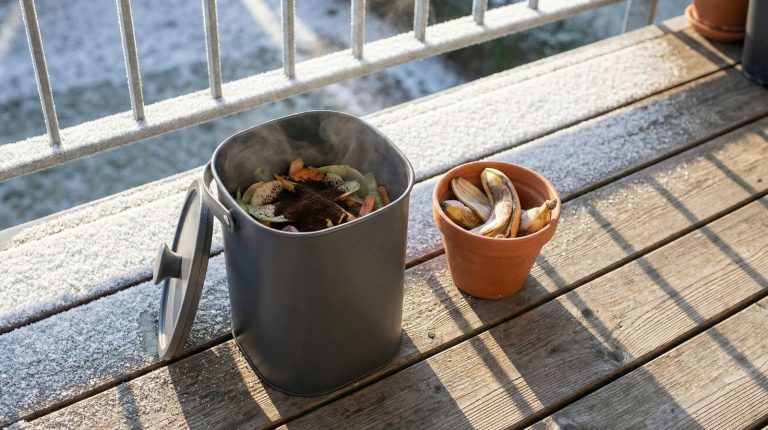Maintaining a radiant hydronic heating system is essential not only for the comfort of your living space but also for the efficiency and longevity of the system itself. Today, we’ll be giving you 7 essential radiant hydronic heating system maintenance tips to help improve your system’s efficiency and lifespan.
By adhering to a set of foundational maintenance steps—such as monitoring system pressure and inspecting for leaks—you guarantee that the system operates at peak performance. However, beyond these basic practices, there are additional nuanced techniques that can considerably enhance system efficiency and reliability.
These advanced methods address the subtle signs of wear and potential failures that might not be immediately obvious, offering a proactive approach to system management. What might these techniques include, and how could they further benefit your heating system’s operation and durability?
Key Takeaways
- Regularly monitor and maintain system pressure between 10-20 pounds to ensure operational stability.
- Inspect and repair leaks promptly to maintain optimal system pressure and prevent corrosion.
- Bleed radiators annually to remove air blockages and ensure even heat distribution.
- Conduct annual boiler efficiency assessments, including checks on burner operation and fuel consumption.
- Schedule professional inspections to detect early issues, ensure safety compliance, and enhance system performance.
Monitor System Pressure Regularly
Maintaining the appropriate system pressure is crucial for the efficient operation of a hydronic heating system. Regularly checking system pressure, which should ideally be between 10-20 pounds, guarantees that the system functions at peak efficiency and extends the life of its components.
Equipped typically with a pressure gauge, hydronic systems allow for easy monitoring of these levels, enabling homeowners and technicians to keep a vigilant eye on operational stability.
It is essential to perform system inspections at least once a month. These inspections involve reading the pressure gauge to detect any significant drops in pressure that may signify underlying issues such as leaks or blockages, which, although not discussed in detail here, can severely impact system performance if left unaddressed.
Through diligent monitoring of system pressure, one not only safeguards the efficiency of the heating system but also contributes to the overall energy efficiency of the home.
Inspect and Repair Leaks
Regular inspections of visible pipes and connections are important for identifying early signs of moisture or water stains, indicating potential leaks in a hydronic heating system. These inspections not only aid in maintaining the system’s efficiency but also guarantee that the comfort levels provided by the heating system are not compromised.
Leaks can be subtle yet destructive; consequently, detecting them early is essential. Utilizing pressure gauges is a practical approach to monitor the system pressure continuously. A noticeable drop in pressure often signals a leak. Addressing these leaks swiftly prevents further damage and helps in preserving the integrity of the system components.
It is advisable to integrate these checks into the annual maintenance schedule to assure consistency and thoroughness. Expansion tanks and valves, important yet often overlooked components, should also undergo annual checks. These are frequent sites for leaks and can greatly impact the performance of the hydronic heating system.
Additionally, be attentive to any unusual sounds like hissing or bubbling. Such noises could indicate air escaping through leaks, necessitating immediate inspection and repair.
Prompt and efficient repair of any leaks discovered during these inspections is critical to maintaining optimal system pressure and preventing corrosion, ultimately extending the system’s lifespan and guaranteeing reliable operation.
Maintain Optimal Water Levels
After addressing leaks and guaranteeing the structural integrity of the hydronic heating system, another important aspect of maintenance is monitoring and adjusting water levels. Maintaining ideal water levels is vital for efficient operation and to prevent system failure.
Water pressure in a hydronic system should typically be between 10-20 pounds. Regular checks of the pressure gauge can alert you to significant pressure changes that might indicate leaks or other issues.
It’s essential to regularly inspect the expansion tank as it plays a significant role in maintaining proper water pressure and accommodating the thermal expansion of water in the system. If the water level is too low, it might not only lead to inefficiency but also risk damage to the heating elements due to overheating.
When adding water to maintain your hydronic system, verify it is free from impurities to prevent corrosion and scale buildup. Monthly visual inspections can help detect early signs of leaks or corrosion around the boiler and piping, safeguarding the longevity and efficiency of your system.
| Component | Check Frequency | Key Indicators |
|---|---|---|
| Pressure Gauge | Monthly | Drops in pressure |
| Expansion Tank | Bi-annually | Improper pressure |
| Water Quality | Each Refill | Clarity, No debris |
| Visual Inspection | Monthly | Signs of leaks, rust |
Bleed Radiators Annually
To maintain the efficiency of hydronic heating systems, it is essential to annually identify and remove air blockages in radiators. Utilizing a radiator key to open the bleed valve efficiently releases trapped air, ensuring heat is evenly distributed throughout the system. This regular maintenance not only optimizes heating performance but also contributes to lower energy costs by preventing unnecessary strain on the heating system.
Identify Air Blockages
Air blockages in hydronic heating systems are a common issue that hinder ideal heat distribution and reduce overall system efficiency. Such blockages, caused by accumulated air in radiators, can lead to uneven heating and cold spots, markedly impacting comfort and increasing energy consumption. To combat this, bleeding radiators annually is an essential maintenance step.
Bleeding radiators is a straightforward procedure that involves using a radiator key to open the bleed valve located typically at the top of the radiator. This process should be performed until water flows out, signaling that the air has been effectively expelled from the system.
It is imperative to inspect each radiator within the system, as air can be trapped in various parts, affecting the system’s overall efficiency.
Regular maintenance, including annual bleeding of radiators, not only enhances heating performance but also contributes to the longevity of the hydronic heating system. By ensuring proper circulation and reducing the workload on the system’s pump, you can avoid premature wear and tear.
Consequently, these maintenance services not only preserve the system’s efficiency but also help in lowering operational costs, providing liberation from excessive energy expenditure and frequent repairs.
Tools and Techniques
Equipped with a radiator key, homeowners can effectively maintain their hydronic heating systems by annually bleeding the radiators, an essential technique for optimal performance. This maintenance process is fundamental for guaranteeing that the system operates with maximal energy efficiency and radiant heat distribution.
Bleeding radiators involves expelling trapped air that can inhibit the efficient flow of water and heat throughout the system.
To begin, insert the radiator key into the valve located at the top of the radiator. Gently turn the key until you hear the hiss of escaping air, and wait for the first signs of water. This indicates that the air has been successfully removed, and the radiator is now fully operational for best heating.
It’s prudent to have a towel or container ready to catch any drips, thereby avoiding mess and potential water damage.
After bleeding the radiators, it is essential to check and adjust the system pressure. The ideal range should be maintained between 10-20 pounds to guarantee the system remains in good working condition.
This adjustment helps sustain the system’s longevity and contributes to overall home comfort by maintaining consistent heat distribution and operational efficiency.
Regular maintenance like this not only enhances performance but also helps in reducing overall energy costs.
Radiator Maintenance Benefits
Annually bleeding radiators yields significant benefits for both the efficiency and longevity of hydronic heating systems. This essential practice of radiator maintenance is vital for sustaining system efficiency, which directly influences energy consumption and heating costs.
By expelling trapped air, the heat distribution becomes more uniform, eliminating cold spots and ensuring consistent indoor temperatures. This not only enhances comfort but also enhances the operation of the heating system.
Moreover, regular bleeding prevents the excessive strain on system components caused by inefficient heat circulation, thereby extending their lifespan and reducing the likelihood of costly repairs.
The annual maintenance of radiators is a proactive step towards a more reliable and economical heating system. Ignoring this necessity can lead to a significant increase in energy bills due to the system’s struggle to heat the space effectively.
To visualize the impact and importance, here is a structured breakdown:
| Benefit | Impact on System | Resulting Advantage |
|---|---|---|
| Improved Heat Distribution | Reduces Cold Spots | Enhanced Comfort |
| Increased System Efficiency | Lowers Energy Consumption | Reduced Heating Costs |
| Reduced Component Strain | Extends Lifespan of Components | Decreased Repair Frequency |
| Consistent Indoor Temperatures | Maintains Comfortable Environment | Improved Living Conditions |
Adhering to a schedule of annual radiator maintenance is not only a technical necessity but a liberating strategy for homeowners seeking ideal heating performance and economic efficiency.
Check Boiler Efficiency
To guarantee ideal performance and efficiency of your hydronic heating system, it is essential to regularly assess burner operation. This involves verifying fuel consumption rates to confirm the boiler is utilizing fuel efficiently, thereby maximizing cost and minimizing waste.
Additionally, monitoring flue temperatures helps detect any inefficiencies or potential issues in the heat exchange process, which are vital for maintaining system integrity and performance.
Assess Burner Operation
Regular assessment of burner operation is essential for maintaining boiler efficiency in hydronic heating systems. Effective burner operation is key to maximizing heating efficiency and guaranteeing the longevity of the system.
By consistently monitoring and adjusting the burner, homeowners and HVAC professionals can prevent unnecessary energy consumption and promote sustainable living.
Here are critical points to take into account:
- Flame Color Observation: Maintain a keen eye on the flame color; a consistent blue flame means your system is burning fuel efficiently. Yellow or orange flames suggest incomplete combustion, which necessitates immediate attention.
- Cycle Frequency Checks: Monitor how often the burner ignites. Frequent cycling could point to thermostat issues or inefficiencies within the system.
- Carbon Buildup Cleaning: Regularly clean the burner to remove any carbon deposits, ensuring unobstructed airflow and peak operation.
- Pressure Settings Management: Adhere strictly to the manufacturer’s recommended pressure, generally between 12-15 psi, to maintain boiler effectiveness and safety.
- Ignition System Inspection: Verify the ignition system functions reliably to avoid inefficient fuel use and potential system failures.
Adopting these practices not only enhances system upkeep and boiler tune-ups but guarantees your hydronic heating system operates at peak efficiency.
Related Post: Effective Solutions to Achieve Energy-Efficient Hydronic Heating.
Verify Fuel Consumption
Monitoring your boiler’s fuel consumption is fundamental for evaluating its efficiency, which should ideally operate at 85% or higher. In the domain of hydronic hot water systems, verifying fuel consumption not only guarantees peak performance but also contributes to cost efficiency and environmental responsibility.
Regular tracking of the boiler’s fuel consumption is essential; an increase over time can hint at potential problems such as leaks or general inefficiencies that need addressing.
Annual combustion efficiency tests are instrumental in confirming that your heating equipment is burning fuel effectively. These tests help pinpoint any deviations from peak performance, allowing for timely adjustments. A well-maintained boiler not only adheres to efficiency standards but also prevents unnecessary expenses due to wasted energy.
Furthermore, cleanliness of the boiler‘s burner and heat exchanger plays a significant role in maintaining efficiency. Dirt and debris accumulation can decrease efficiency by up to 15%, emphasizing the importance of regular inspection and cleaning.
Implementing a fuel management system can provide invaluable real-time data, facilitating immediate adjustments to enhance the boiler’s efficiency. Such proactive measures in verifying fuel consumption are critical for sustaining an efficient and cost-effective hydronic hot water system.
Monitor Flue Temperatures
Evaluating flue temperatures is an essential component in determining the operational efficiency of hydronic heating boilers. By regularly monitoring flue temperatures, you can gauge whether your boiler is functioning at its best or if it’s consuming more fuel than necessary.
This practice not only guarantees the longevity of your heating system but also contributes to a more energy-efficient, cost-effective home environment. To effectively monitor flue temperatures and maintain peak boiler efficiency, consider the following practical steps:
- Regular Monitoring: Check flue temperatures frequently with a reliable digital thermometer to detect any significant changes that could indicate inefficiency.
- Ideal Range Identification: Aim to maintain flue temperatures between 300°F and 400°F for ideal boiler performance.
- Address High Temperatures: If temperatures exceed 500°F, your boiler may be over-firing, which can lead to increased wear and higher energy costs.
- Detect Incomplete Combustion: A notable decrease in flue temperatures could suggest incomplete combustion, a sign that your boiler is not utilizing fuel effectively.
- Adjust Settings: Use the accurate readings from your digital thermometer to make necessary adjustments to the boiler settings, enhancing both efficiency and comfort in your home.
Through diligent maintenance and proactive monitoring of flue temperatures, you can guarantee that your hydronic heating system remains a reliable and efficient source of warmth.
Address Unusual Noises Promptly
Listening attentively to your hydronic heating system can reveal essential insights about its operational health. Unusual noises, such as banging, gurgling, or hissing, are not just disturbances but significant alerts that your system requires immediate attention. These sounds often indicate problems like trapped air in the pipes, leaks, or failing mechanical components, which can compromise the efficiency and longevity of your system.
A proactive approach to maintaining your hydronic heating system involves regular monitoring and addressing these auditory cues promptly to prevent minor issues from escalating into major repairs. For homeowners, recognizing these sounds and understanding their implications is vital. Here is a detailed breakdown of common noises and their potential causes:
| Noise Type | Likely Cause |
|---|---|
| Banging/Gurgling | Trapped air in pipes |
| Hissing | Leaks or pressure issues |
| Grinding/Whining | Failing pump or valve |
Schedule Professional Inspections
Scheduling annual professional inspections for your hydronic heating system is crucial for maintaining its operational efficiency and prolonging its lifespan. Involving certified technicians to conduct yearly inspections can help guarantee that your system delivers peak comfort and efficiency.
Here are pivotal reasons to schedule a service appointment:
- Early Issue Detection: Certified technicians can identify and rectify potential problems before they escalate, avoiding costly repairs and downtime.
- System Efficiency: Regular check-ups guarantee the system runs at peak efficiency, potentially reducing your energy bills by pinpointing and fixing leaks or other inefficiencies.
- Comprehensive Tune-ups: During inspections, professionals check critical components like boilers, pressure relief valves, and glycol pH levels, enhancing overall system performance.
- Safety Assurance: Expert assessment of expansion tanks, pumps, and wiring ensures that all aspects of your hydronic heating systems are safe and up to code.
- Peace of Mind: Knowing that your heating system has been thoroughly evaluated and maintained by professional HVAC technicians provides considerable relief and comfort.
Conclusion
In summary, diligent maintenance of radiant hydronic heating systems is essential for ensuring their longevity and operational efficiency. Regular monitoring of system pressure, timely repairs of leaks, and annual radiator bleeding are fundamental. Additionally, evaluating boiler efficiency and addressing any abnormal noises enhance performance and prevent future complications.
Scheduling professional inspections contributes to early problem detection, thereby safeguarding the system’s functionality. Adherence to these maintenance practices greatly optimizes energy use and extends the system’s lifespan.




